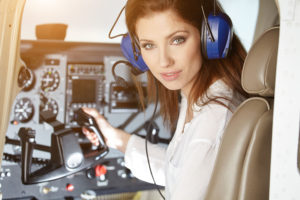
Photo: 123RF
Is flying a plane different than driving?
Is flying a plane different from driving a car?
Blake Winfield from Quora asks this question.
I will answer this by elaborating more about flying than by car.
When I started learning how to fly in UK, I found that it wasn’t as easy as I had expected.
The process of flying is 3-dimensional; moving straight ahead, turning left or right and going up or down. However, a driver needs to be concerned with only 2 dimensions, moving ahead and turning left or right.
During an emergency, a car can stop on the road and get it fixed. On a plane, it cannot slow down below the stalling speed or else it will drop off the sky!
Flying in itself is not inherently difficult but it is often inundated with additional tasks like communicating with the control tower, maintaining the altitude when flying without auto pilot and many other actions during an emergency.
The simple truth is: humans are not made to fly. This means that some of their senses, such as their ability to gauge if they are flying upside down in the absence of visual cues are practically useless when caught inside the clouds. A pilot’s senses may tell him that he is still flying straight up while the flight instruments indicate a totally different story.
This is no different from when you are in a train and the adjacent one starts moving, you experience a false illusion that your train has started to move in the opposite direction. His senses tell him that he is moving, but in reality, he hasn’t moved an inch!
To counter this error of sensory perception, pilots are trained to trust and fly on the aircraft’s flight instruments.
Apparently, JF Kennedy Junior’s plane crashed because of this ‘spatial disorientation’.
Although flying is safe, it is unforgiving of carelessness. To avoid such shortcoming, airline pilots undergo very intensive training.
The hydraulics, electrical, navigational and other systems must be mastered before a pilot is allowed to fly.
Every pilot is also equipped with the necessary expertise to respond to emergencies with this golden rule – Aviate, Navigate and Communicate.
In line with this rule, the pilot must first continue to fly the stricken plane and then, ascertain his location as well as the direction it is heading.
Once the pilot has successfully completed these two stages, he or she then needs to make contact with the control tower to inform them of the situation at hand.
CONCLUSION
Some are of the opinion that flying is nothing but endless hours of boredom with possible periods of great stress.
The truth is, the passion that pilots have for their jobs can often be explained by their thrill of flying and the occasional adrenaline pumping moments they experience in the air.
So ultimately, considering the various facets of flying, the response to “Is flying a plane different from driving a car?”, the answer is Yes.
Piloting Airbus A330 out of San Francisco